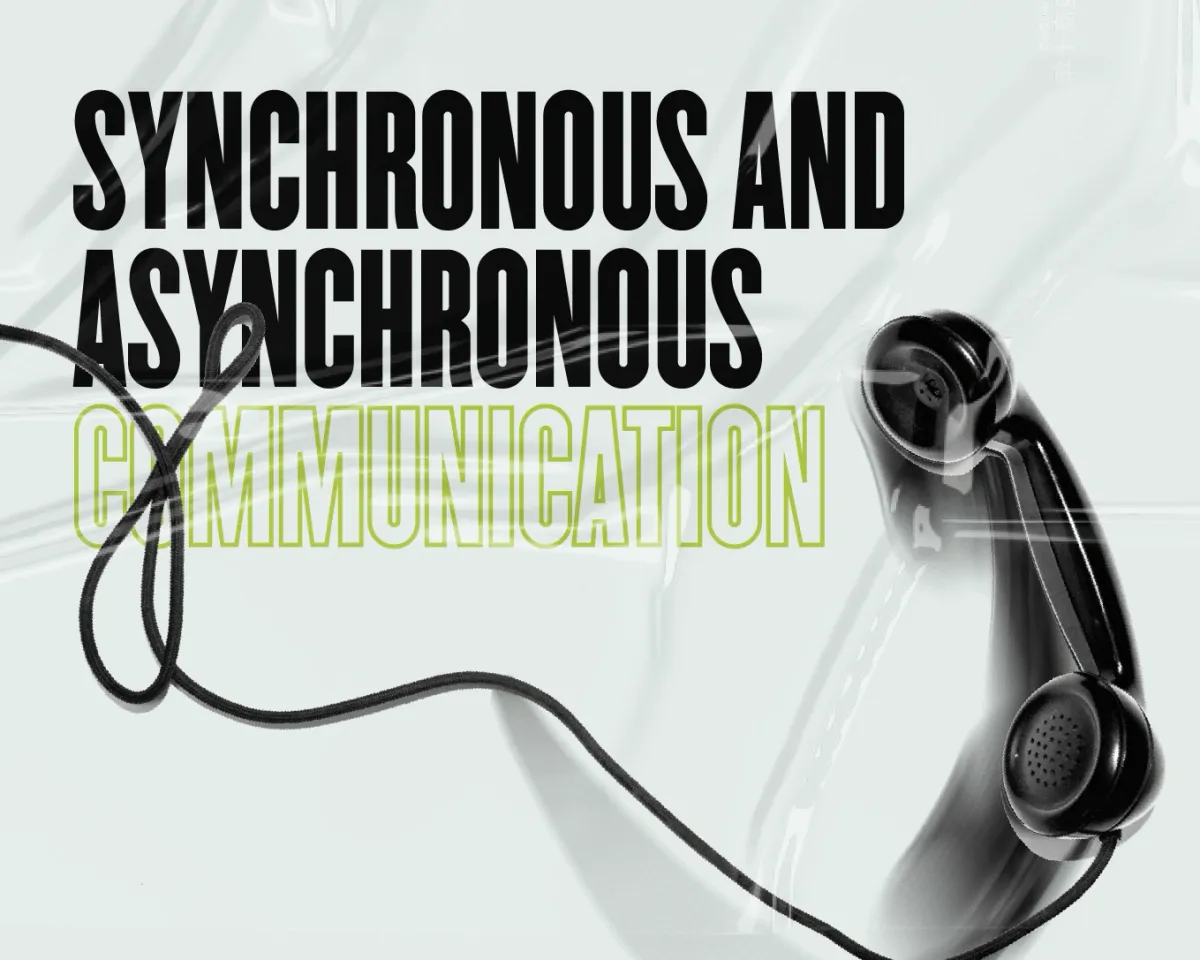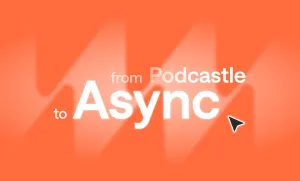If language is the mother of all knowledge, then communication is the mother of all skills. There is nothing more fundamental for the success of a team than proper communication. One of the biggest challenges of managing a team, especially if some or all members are working remotely, is coming up with the most efficient means of communication. Choosing whether to email your team members, message them, or schedule a call is a never-ending dilemma. Knowing the difference between synchronous and asynchronous communication can help you deal with this challenge, and improve overall collaboration and the productivity of the team.
There is no one-size-fits-all solution, and moreover, no single means of communication is objectively better than another. Instead, it's all about knowing when and how to use each of them. This article will explore the differences between synchronous and asynchronous communication, their pros and cons, and when and how it is best to use each.
What is Synchronous Communication?
Synchronous communication happens in the moment, where parties listen, reply, and act upon the received information. It includes in-person meetings, remote video sessions, phone calls over VoIP, and small talk near the cooler. In simple terms, synchronous communication refers to two or more individuals exchanging information with each other in real time. It can also be impromptu and doesn't necessarily have to be scheduled or planned.
People generally communicate synchronously on a regular basis. The sender and receiver establish communication and act on it. Asking a stranger for directions, sharing small talk with the colleague sitting at the adjacent desk, or discussing something with a friend are all examples of synchronous communication that are common in our daily lives. They can also include customer support specialists assisting a client over live chat. There are no limitations on sending chat messages and replying to them; both sides can do it simultaneously, having a two-way conversation. One side sends a message, the other replies, and so on.
What is Asynchronous Communication?
Asynchronous communication implies that parties do not actively listen and respond to one other another in real time. Rather, there's a time gap or delay between the time a message is sent, and the time the recipient responds to it. Communication happens over a period of time; asynchronous communication does not generally take place in person, and is not something that is planned or scheduled in advance. Examples include emails, letters, video recordings, text or voice messages, etc.
When you leave a voice message to your friend at night so they see it when they wake up,, it's a case of asynchronous communication. Similarly, when a customer emails the support specialist instead of texting them through live chat, that is also a good example. If your supervisor leaves a note or a message to you in a shared document, this is yet another good example of asynchronous communication.
Asynchronous vs. Synchronous Communication: Pros and Cons
Both synchronous and asynchronous communication have pros and cons that, in specific scenarios, render them better to use over the other. Here, you'll learn about the benefits and disadvantages of both methods.
Benefits and Challenges of Synchronous Communication
Pros: The best part about synchronous communication, which its counterpart lacks, is immediacy. If you have a question, you receive the answer immediately. Or at least you know you need to look for it somewhere else. Synchronous communication is also effective in brainstorming or "huddling" sessions, where various ideas and opinions are shared and discussed. All participating team members can discuss a given topic in-depth and narrow it down to the best suggestions and potential solutions.
Synchronous communication also serves as a strong foundation for building rapport with other people, be it your colleagues, students, or friends.
Cons: On the other hand, synchronous communication can be disruptive and create obstacles preventing many from focusing on their work. In fact, one Forbes study shows that 71% of people report frequent interruptions when they're working.
Synchronous communication is also disadvantageous when it's between people from different time zones, which may diminish the quality of conversation. Sure, both parties agree to a time, but some urgent matters demand a call to be set up fast and quickly. Thus, such situations can disrupt the work-life balance of one side, and also create other challenges hindering productivity, such as connectivity issues.
Benefits and Challenges of Asynchronous Communication
Asynchronous communication, in turn, provides more flexibility, as there is no additional pressure created by the need to respond immediately. More time to respond means more room to focus on providing the best possible response, ultimately leading to a better outcome.
Help desk tools can significantly enhance the effectiveness of asynchronous communication by providing streamlined channels for clarifications and updates, ensuring that responses are prompt and clear, thus mitigating any potential issues with message clarity or response times.
Unlike synchronous communication, the asynchronous version is more time-zone friendly. There's no need to coordinate a minute-to-minute time for a virtual meeting. Urgent matters aside, freedom from synchronicity can yield much more productive results. That said, there should be set practices for everyone to follow carefully, such as documenting any updates so that everyone can stay informed.
However, this also means that asynchronous communication lacks the immediacy that managers seek. The response time for specific issues can stretch, which can harm efficiency.
Asynchronous communication may pose issues regarding the clarity and effectiveness of the message. When relying on this method, the message must be as clear and digestible as possible. You don't want angry clients who have asked for clarifications to be wasting their valuable time waiting for an explanation, especially if the matter is of some urgency.
Synchronous and Asynchronous Communication Best Practices
Synchronous communication is best when you need an immediate response. It should be a short and simple conversation where you're clear on your discussion's goals and topic. Synchronous is better for urgent issues, providing and receiving instant feedback, building relationships, and other forms of interactions where everything, at least to an extent, is planned and structured beforehand.
Asynchronous communication is better if you don't necessarily need a response in the same moment, are communicating a message to a person in a different time zone or to a group of people who can't all be simultaneously present. Be utmost clear and transparent in your message, and try not to leave any confusion for the recipient. Asynchronous communication should also be carefully crafted with intent. Make sure you're using the right tools and methods.
Ensure Efficient Communication Using Podcastle
If your team is working remotely, Podcastle is the best software for your remote video sessions, ideally fitting with both synchronous and asynchronous communication practices. This AI-powered app allows you to hold remote video meetings that automatically ensure all participants can listen to each other perfectly, clearing the background noise and amplifying and softening the voices. You can also have the entire session recorded and saved in a slick grid layout.
Podcastle allows you to access the recording files separately and edit the audio tracks individually in case you need AI to clean background noise or automatically adjust audio levels and make it consistent.
Apply these and other features and tools with just one click each time. Save your files in the cloud or on your device, and share them with any team member who missed the session, guaranteeing they can grasp everything that has been said.
Closing Points
While many companies and managers prefer one form of communication over the other, a healthy balance between the two is also possible to establish. Ultimately it depends on your needs and preferences. Knowing the difference between synchronous and asynchronous communication, their pros and cons, and when and how you can use each, is vital to making the best decision every time.








